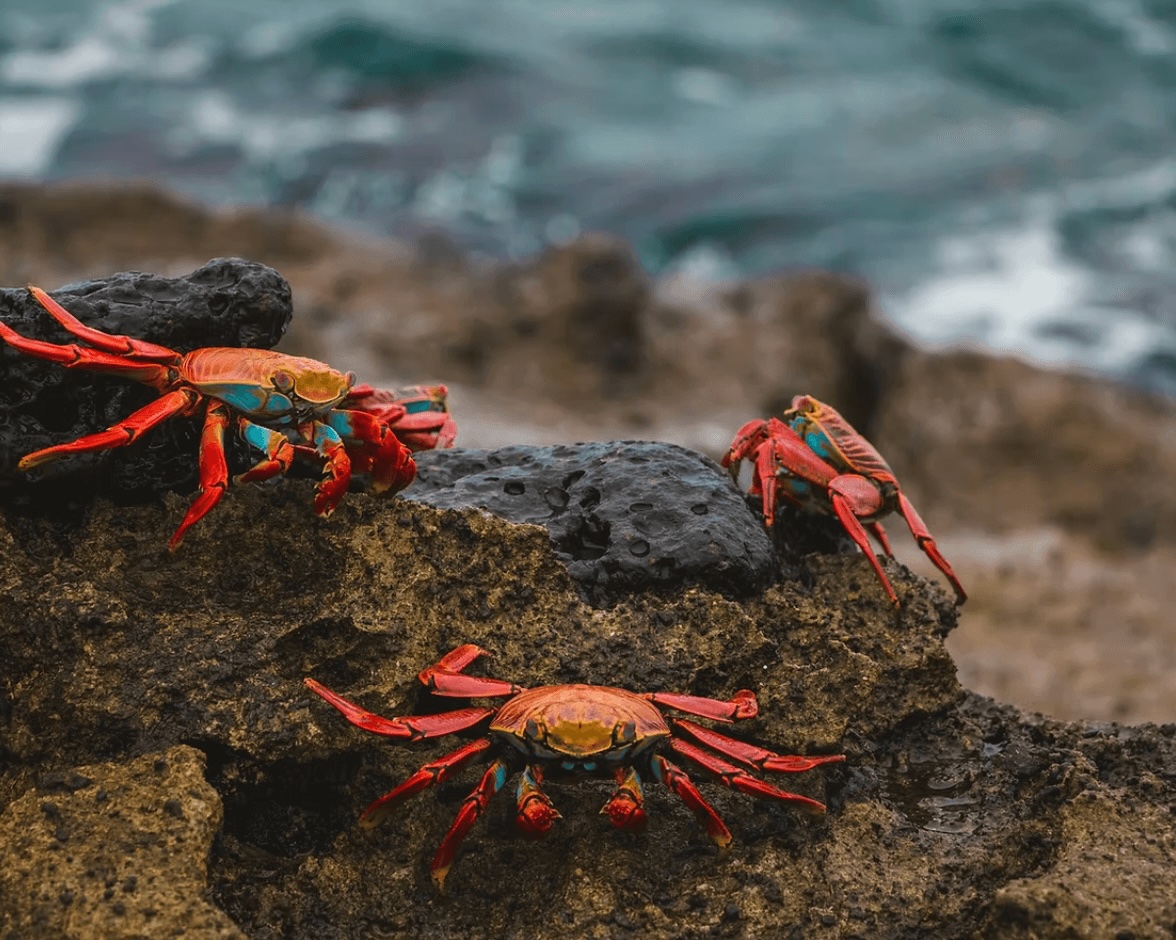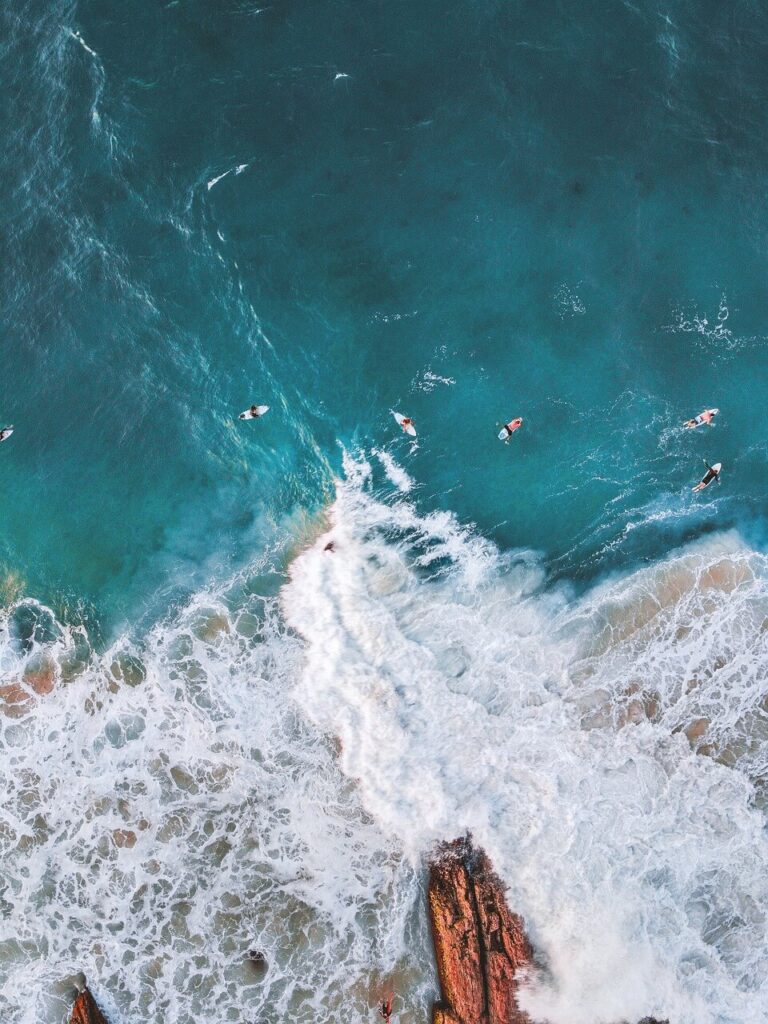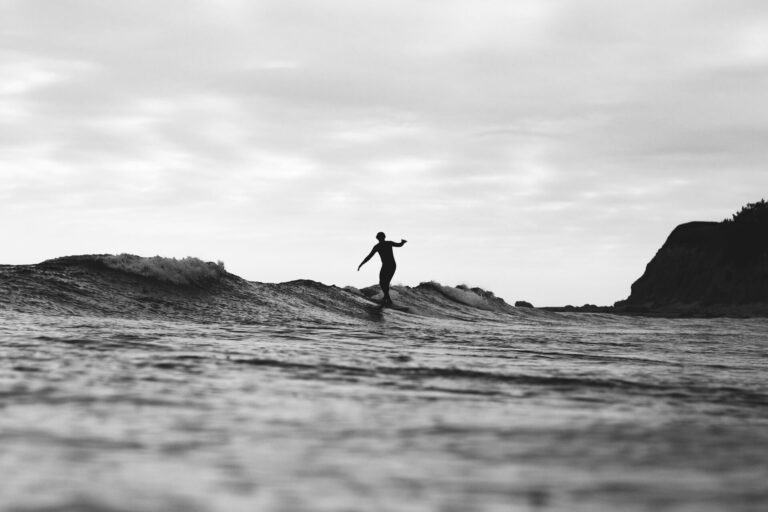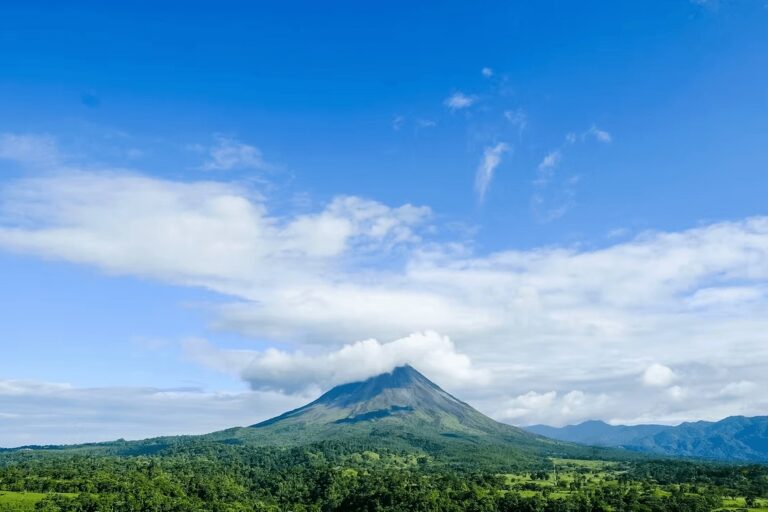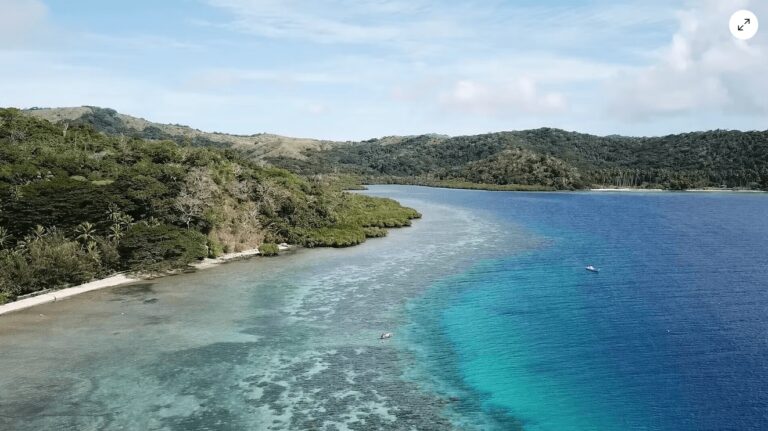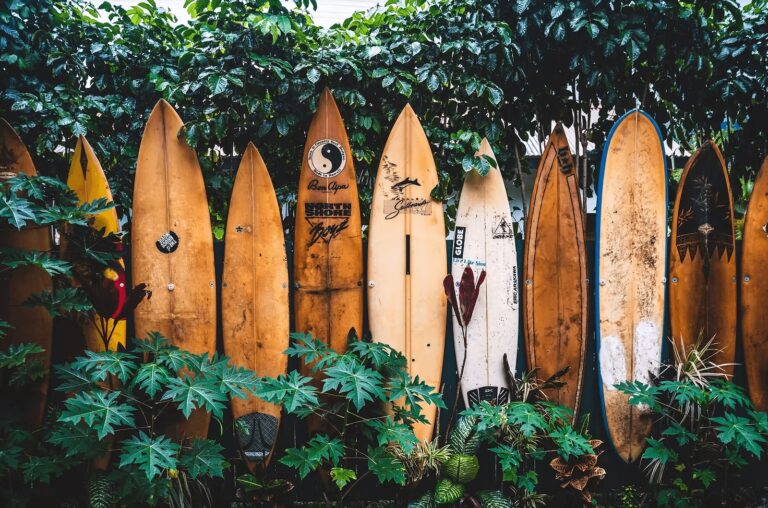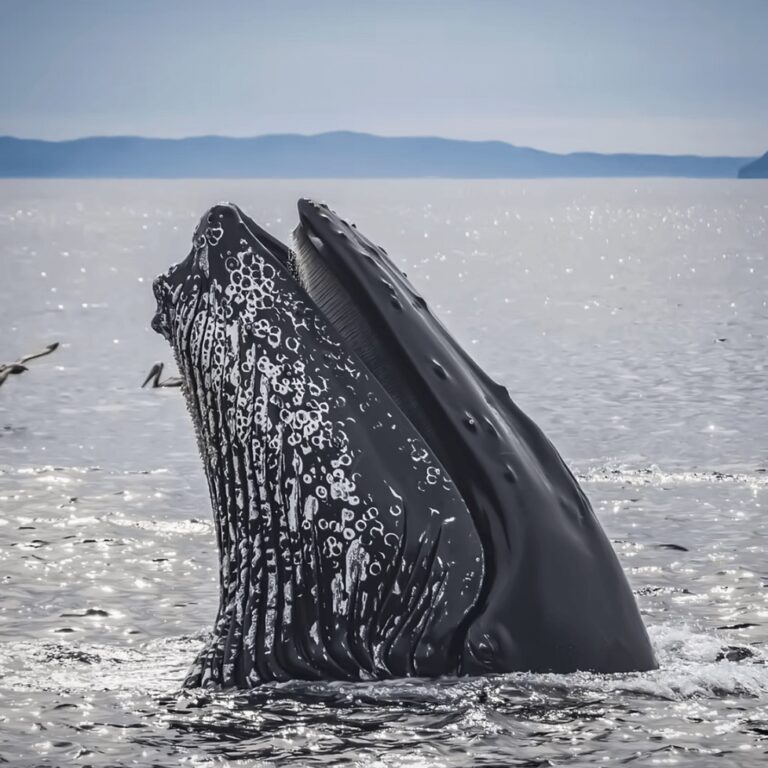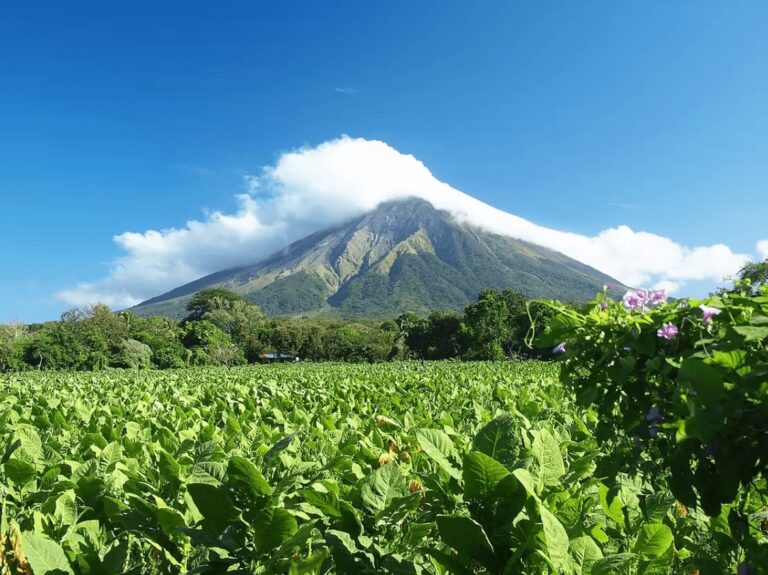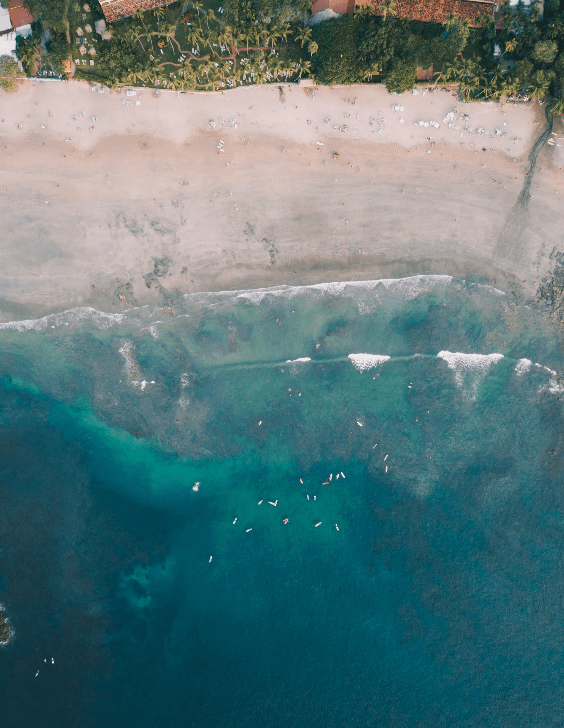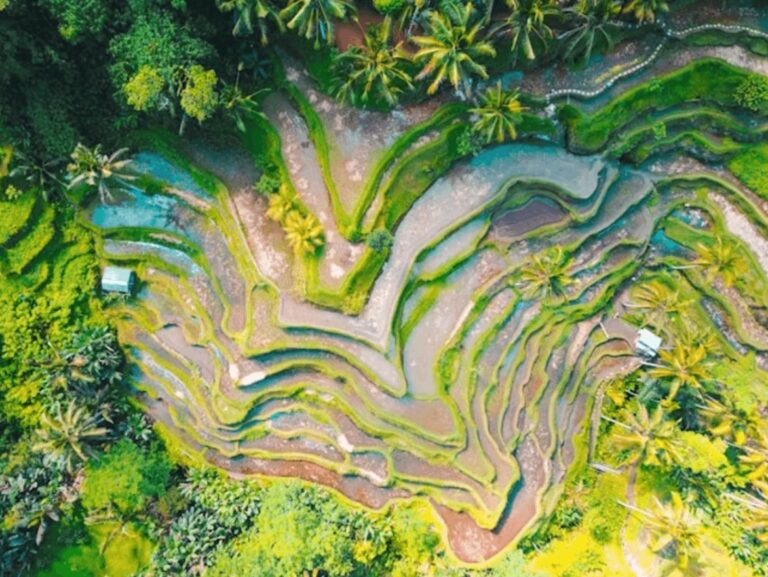Surfing Galapagos Islands: Best surf spots + eco-friendly hotels
Planning a surf trip to South America? Discover everything you need to know about surfing the Galapagos Islands, including the best surf spots and eco-friendly places to stay.
Not long ago, the Galapagos Islands were not even on the radar for most surfers. This UNESCO-listed archipelago was known more for its incredible natural landscapes and diverse wildlife than its waves.
Ecuador’s mainland had long been a popular surfing destination, with spots like Montañita drawing legions of wave riders. But the remote Galapagos remained largely overlooked.
In the past few decades, a growing number of adventurous surfers have discovered that this far-flung Pacific outpost, famed for its unique evolutionary history, is in fact home to some fantastic surf.
Situated at the convergence of powerful swells from both the North and South Pacific, the Galapagos boasts a wealth of volcanic reef breaks that provide a surfing experience unlike anywhere else.
It’s a unique opportunity to share the lineup with an incredible array of marine life. You can expect everything from playful sea lions and sea turtles to the occasional Galapagos shark.
While some of the best surf spots in the Galapagos are well-established, the vast majority of the waves remain largely unexplored. Many are only accessible by boat.
This sets the stage for an epic adventure for surfers looking to discover uncrowded breaks in one of the world’s most spectacular destinations.
In this article, discover everything you need to know about surfing in the Galapagos Islands. We’ll highlight the best surf spots in the Galapagos, the ideal time to catch waves and eco-friendly hotels for a sustainable stay.
If you’re planning to surf your way around South America, check out our surf guides to Colombia, Ecuador and Peru.
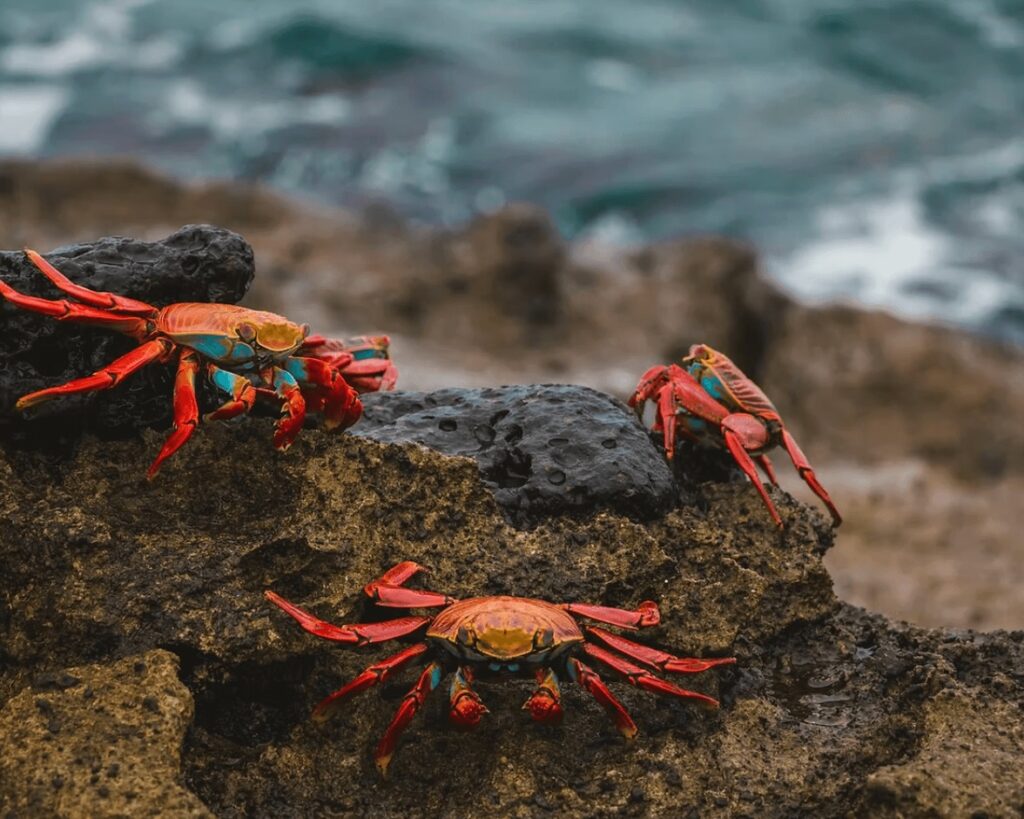
This article contains affiliate links, which means when you make a purchase through that link, I earn a small commission. Affiliate links come at no cost to you and ensure my content remains free!
San Cristobal
San Cristobal is widely regarded as the best place for surfing in the Galapagos Islands, with its location capturing both north and south swells. The island boasts an abundance of breaks catering to intermediate and advanced surfers.
Beyond the quality of the waves themselves, the island also benefits from a vibrant local surfing community. There are ample opportunities for riders to connect and immerse themselves in the Galapagan way of life.
Want to dive during your surf trip to the Galapagos? Discover all the best dive sites in our detailed article here.
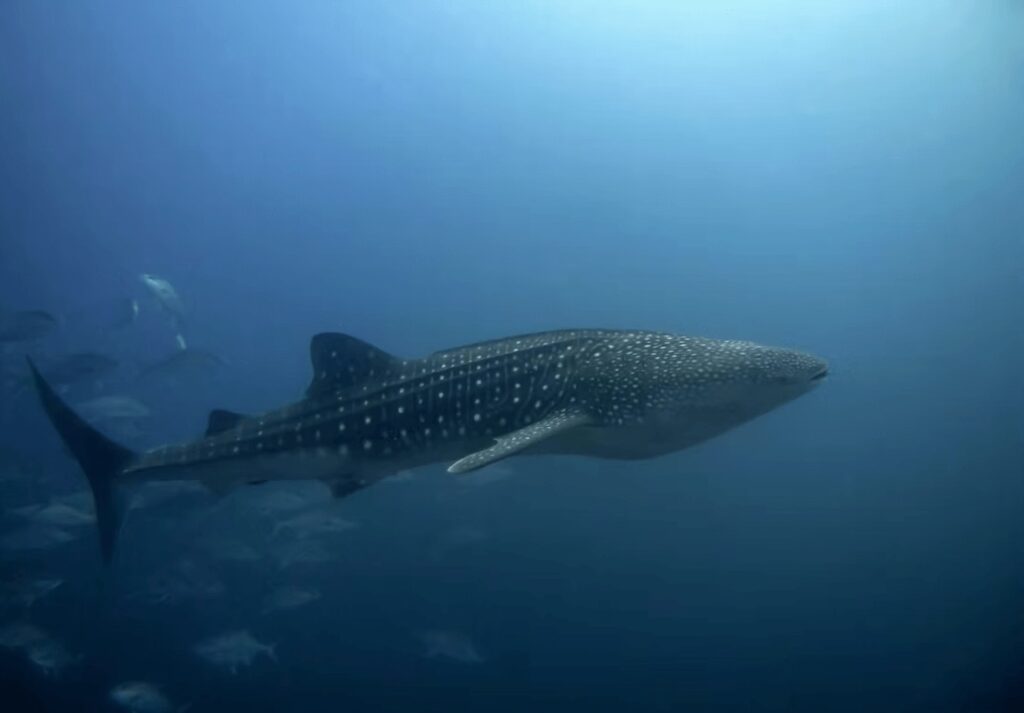
Best surf spots on San Cristobal
Loberia
On the southern shores of San Cristobal, Loberia is a wave rider’s dream. That being said, it requires some commitment to reach. Accessible only by boat or a multi-hour hike across rugged coastal terrain, it’s well worth the effort if you’re seeking consistent waves.
When the swell is up, Loberia offers a long, walling right-hander that allows for carving turns and cutbacks. Additionally, there’s a shorter but punchier left that finishes over a near-dry reef.
Even on calmer days, Loberia remains a picturesque destination. The beach itself is one of the most beautiful on San Cristobal.
Colonies of playful sea lions often bask in the sun here and watching their antics is the perfect way to wind down post-surf.
With the crowds at Loberia usually low, you can enjoy the waves without too much competition.
Punta Carola
A 15-minute walk from the town of Puerto Baquerizo takes you to Punta Carola, which draws wave riders thanks to its consistently good conditions. The waves here primarily roll in from the north. Understandably, it’s a sought-after surf spot during the peak season from December through May.
During these months, the swells transform into 1-3 metre walls of water that provide a challenge for surfers of all skill levels. Add to that Punta Carola’s breathtaking natural setting and it’s sure to be a session you’ll never forget.
Tongo Reef
Tucked away in the southern reaches of San Cristobal is remote Tongo Reef. Though only accessible by boat, the journey is more than worth it.
What makes Tongo Reef so special is not just the quality of the surf, but the sense of solitude and seclusion that comes with it. This is a Galapagos surf spot where crowds are almost non-existent.
To reach Tongo Reef, you first have to pass a military checkpoint and provide proper identification. Then, embark on the 45-minute coastal walk that leads to the break.
Along the way, don’t be surprised to encounter sea lions, lizards and other iconic Galapagos wildlife. It’s all part of the experience surfing in the Galapagos Islands!
The reef itself is divided into three distinct sections – El Pico, El Medio and El Bajito. Each offers its own challenges and character.

Eco-friendly places to stay on San Cristobal
Eco Hotel Katarma
Not only is this one of the most eco-friendly hotels in San Cristobal but it has a strong focus on art throughout its design.
Eco Hotel Katarma features 14 spacious rooms with recycled ceramic tiles that lend a warm, earthy feel. Additionally, there’s an inviting swimming pool for after-dive dips.
Eco Hotel Katarma can help you arrange scuba trips with local operators, as well as advising on lots of free activities to do in the area.
“Eco Hotel Katarma is a stunning eco-friendly oasis in the Galápagos.” – Matt (read more reviews here)
Cucuve Eco Hostal
Nestled among fruit trees and hammocks perfect for unwinding is the Cucuve Eco Hostal.
This sustainable hostel in Puerto Baquerizo Moreno is a great choice for surfers looking to conquer the waves at Punta Carola.
The accommodation options include single and double rooms, as well as two-room suites and a special family room.
“Honestly ran by the loveliest of people.” – Fisher (read more reviews here)

Santa Cruz
Located to the west of San Cristobal, Santa Cruz is another wave-rich island in the Galapagos. It’s also one of the archipelago’s most popular destinations. Surreal volcanic landscapes, gorgeous beaches and the Charles Darwin Research Station are among its highlights.
Surfing in Santa Cruz can mean riding waves in the morning and getting up close to giant Galapagos tortoises in the afternoon.
Best surf spots on Santa Cruz
Punta Negra
Located in the Manzanillo area of Santa Cruz is Punta Negra (Black Point). Its wave offers challenging rides for experienced surfers. Its takeoff is steep as you drop into the face before peeling up to 150 metres.
It’s an adrenalin-fuelled experience that has earned Punta Negra a reputation as one of the best surf spots in the Galapagos Islands.
However, you need to time your session carefully. The wave is highly sensitive to wind conditions, with the optimal window typically occurring from February through May.
Tortuga Bay
Tortuga Bay is regularly voted as one of the world’s best beaches. But it’s also a dreamy surf destination.
This stunning stretch of coastline on Santa Cruz is home to a popular beach break that caters to everyone from beginners to advanced surfers. While the waves here can pack a punch out back, the inside section is suitable for novices, especially with the guidance of a local instructor.
With generally low to moderate crowds, small swells from the south and reliably offshore winds, Tortuga Bay provides consistent surf. It was even selected to host one of the main events for the ALAS Latin Tour just a few years back.
After your session, keep your eyes peeled for prehistoric-looking Galapagos tortoises roaming the shores and marine iguanas basking in the sunshine.
La Ratonera
Not far from the Charles Darwin Research Station in Puerto Ayora lies a small, rocky beach, La Ratonera. It has become a beloved destination for surfers and adventurous visitors alike, with marine iguanas patrolling the shoreline backed by dramatic cliffs.
It’s easy to see why La Ratonera has become a mecca for surfers. Additionally, the clear waters and diverse marine life make it ideal for snorkelling – bring your mask and snorkel to catch a glimpse of the Galapagos’ underwater world.
Despite its popularity among adventurous travellers, the beach maintains a sense of seclusion that’s all part of its appeal.

Eco-friendly places to stay on Santa Cruz
Finch Bay Galapagos Hotel
Recognised by National Geographic as one of their “Unique Lodges of the World”, Finch Bay is the only full-service Galapagos eco-hotel with a beachfront setting.
Each of its rooms and suites is beautifully designed by Julio Vinueza. Plus the tranquil pool attracts finches and herons all day long.
Finch Bay offers scuba diving excursions and packages that explore the neighbouring waters of the Galapagos Marine Reserve.
“Would recommend as one of the best hotel experiences around the world HANDS DOWN.” – Robinson (read more reviews here)

Ikala Galapagos Hotel
Located in Puerto Ayora, this modern hotel has been designed around the principles of luxury, sustainability and environmental protection. Most notably, it harnesses the use of solar for its energy needs.
Aside from its well-appointed rooms and suites, there’s an onsite restaurant and a small pool where you can refresh at the end of the day.
Ikala Galapagos is within walking distance of the 5-Star Padi Center at Scuba Iguana, which offers daily dive excursions.
“A little oasis in Puerto Ayora.” – Sally (read more reviews here)
Blu Galapagos Sustainable Waterfront Lodge
Overlooking the water, this luxurious, eco-friendly resort on Santa Cruz provides all-inclusive deals that cover excursions around the island chain.
It’s the perfect choice for travellers interested in surfing at Tortuga Bay, with stylish accommodations and a relaxing outdoor dining area.
“Everything was over the top perfection.” – Cynthia (read more reviews here)

Isabela
With its breathtaking natural landscapes and string of shield volcanoes, Isabela is one of the Galapagos’ youngest islands. Its wide, gently sloping beaches provide perfect conditions for novice surfers to learn the sport in a safe, accessible manner.
As a result, the island is home to a thriving surf school industry, with numerous outfitters offering lessons and equipment rentals. There are several surf zones around the island offering reliable waves, although not all are approved for surfing under current regulations.
Barahona Point
This long, peeling right-hander is renowned for its mellow nature, unravelling for around 200 metres over a reef base. While it can get quite solid at times, Barahona Point generally offers a soft, forgiving ride that belies its size.
Notably, it is currently the only wave on Isabela that is approved for surfing under the island’s new regulations. This makes it one of the best surf spots in the Galapagos Islands.
Eco-friendly places to stay on Isabela
Chez Manany Galapagos Ecolodge
Offering spacious studios and apartments, this Galapagos ecolodge offers sustainable stays on Isabela Island.
It’s owned by an Ecuadorian family who pride themselves on using renewable energies and zero-waste management plans. Additionally, they grow as much of their own produce in an organic garden.
“Probably the most comfortable place on Isabela.” – Frank (read more reviews here)

Best time to surf in the Galapagos Islands
Situated almost 1,000 kilometres off the coast of Ecuador, the Galapagos Islands boast a unique setting and a warm, temperate climate year-round. This equatorial positioning also subjects the archipelago to the swells and currents of the surrounding Pacific Ocean, creating prime surfing conditions.
While the islands can be enjoyed as a surf destination throughout the year, the ideal time to visit is from December to May. The most favourable winds are generally experienced from February to April.
During this peak surf season, the Galapagos basks in abundant sunshine. Average temperatures reach around 27 degrees Celsius.
The ocean waters remain a comfortable 23 degrees Celsius, perfect for long sessions in the lineup.
Not only that but the powerful reef breaks that ring the islands come alive. Best of all, the islands tend to be less crowded during these months, as they fall within the Galapagos’ low season for tourism.
Top tip:
Most surfers visiting the Galapagos Islands are comfortable in board shorts/swimsuit and a 2mm jacket or rashie. If you feel the cold, opt for a 3/2mm wetsuit.

How to get to the Galapagos Islands
The Galapagos Islands are located 965 kilometres (600 miles) off the coast of Ecuador but are easily accessible thanks to daily flights.
Several airlines currently offer direct flights to the Galapagos from both Quito and Guayaquil, including TAME, LAN-Ecuador and Avianca. The flight time is around two hours from Guayaquil and three hours from Quito.
If you’re flying in from an international destination, it’s recommended that you plan for an overnight layover on the mainland before continuing on to the Galapagos Islands. This is because most of the domestic flights to the Galapagos depart early in the morning.
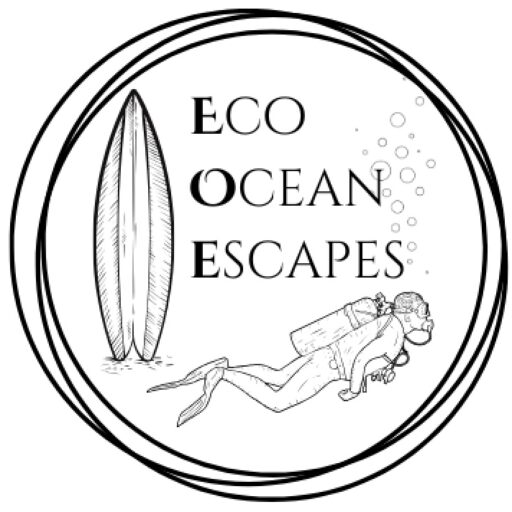
PLAN YOUR TRIP WITH OUR FAVOURITE RESOURCES:
Find hotels and resorts via Booking or Agoda
Book tours and experiences via Viator or GetYourGuide
Find a rental car via Discover Cars
Book flights via Kiwi or Booking
Search for buses and trains via 12Go or Omio
Get travel insurance via SafetyWing
Buy a digital eSIM with Airalo
By purchasing through our links, you’ll be supporting our website at no additional cost to you
About the authors
We are a team of passionate divers and surfers with decades of combined experience in the water and travelling to all corners of the globe. After years of chasing waves and descending into the deep blue, we’ve created this resource to highlight sustainably run surf camps, eco-friendly dive resorts and conservation-focused ocean trips to help inspire your next adventure.
Eco Ocean Escapes was born out of a love of the ocean, an obsession with travel and a concern about the impacts of our adventures on the environments we explore. Despite the benefits that surf and dive tourism can bring to local communities, we recognised that ocean-based adventures are not always managed in a sustainable manner.
Through our articles, we hope to inspire those seeking a responsible surf or dive trip that is all about supporting local communities, preserving our coastal environments and the incredible marine species that inhabit our oceans.
-
Sustainable Surf Tourism and Respecting Local Communities
Surf tourism has exploded over the last two decades. With travel becoming more accessible and social media exposing hidden spots, once-remote breaks in Indonesia, Central America, Morocco and the Pacific Islands are now iconic stops on global surf circuits. While surf travel brings income, jobs and global attention to coastal towns, it can also disrupt…
-
Inspiring Citizen Science Projects for Surfers + How to Get Involved
As surfers, we are intimately connected to the ocean – its rhythms, its wildlife and its health. Because of this relationship, many of us are looking for meaningful ways to protect the marine environments we love. One of the simplest and most impactful ways we can do this is by joining citizen science projects. These…
-
Understanding Marine Protected Areas (MPAs): Why divers should care
If you’ve spent time underwater (as a diver or snorkeller), you’ve probably noticed something: not all sites are beacons of health. Some reefs appear vibrant and full of life, while others show signs of stress – broken coral, few fish or algae-covered rocks. One of the biggest factors shaping the health of our oceans is…
-
Costa Rica: Best Marine Parks for Scuba Divers + Eco Dive Resorts
Costa Rica is a paradise for eco-conscious travellers and underwater explorers are no exception. With its healthy coral reefs, pelagic-rich waters and some of the most progressive environmental policies in the world, the country is a dream destination for those who want to dive responsibly. We’ve been lucky enough to visit Costa Rica several times…
-
Eco-Diving: Best Destinations for Sustainable Scuba Travel
As humans inspired by the underwater world, there is plenty of incentive to protect our coral reefs. Here at EcoOceanEscapes, we want to do our bit to save endangered marine species and keep our oceans free of trash. One impactful action we can all take is to choose sustainable diving destinations. These are nations (or…
-
Eco-Friendly Diving: How to Be a Sustainable Scuba Advocate
Understand the environmental impacts of diving and sustainable scuba practices in this comprehensive guide to eco-friendly diving. Any diver will tell you that being underwater is an incredible experience. It’s a world that not everyone has the opportunity to explore and the encounters we have with marine creatures can be life-changing. Watching manta rays soar…

We are a team of passionate divers and surfers with decades of combined experience in the water and travelling to all corners of the globe.
After years of chasing waves and descending into the deep blue, we’ve created this resource to highlight sustainable surf camps, eco-dive resorts and conservation-focused ocean trips to help inspire your next adventure.
Eco Ocean Escapes was born out of a love of the ocean, an obsession with travel and a concern about the impacts of our adventures on the environments we explore.
